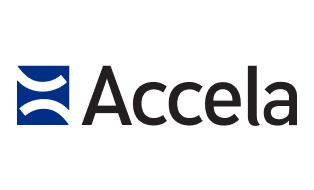This article was originally published by the National Environmental Health Association’s (NEHA) Journal of Environmental Health in its November 2022 issue that can be found here.
Some of my favorite times are when I can get together with friends and colleagues who I have worked and collaborated with over the years. On the other hand, there is also the joy of making new connections—prompted by mutual needs, interests, and history—that provide a fresh infusion of perspectives and ideas.
The National Environmental Health Association (NEHA) and its regional affiliates are superb examples of effective communities of practice. In addition to NEHA, there are also associations for hazardous materials, wastewater, drinking water, vector control, and many more. Communities of practice establish social learning systems for circulating skills, methodologies, and innovations. Even just swapping stories is extremely constructive and supportive.
Communities of Practice for Software Users
Your software provider ideally facilitates communities around its software and users. The village can embrace environmental health experts (e.g., program managers, inspectors), as well as power users who manage renewals, billing, collections, report writing, and other functions. Cross-connecting with these experts is ideal. Healthy communities are larger and more vested in common interests, enough to be self-sustaining. When the thoughts, ideas, and educational materials are member-generated, they become self-sustaining. Said better, it is superior when the membership “owns” the organization, providing direction on a multitude of programs that make the organization the place to go for valuable resources.
It Is Time to Emphasize the Face-to-Face
Yes, these communities can function digitally (e.g., through message boards, Discord, Slack, etc.), but they really become something special when done face-to-face, or at least via video conference. Coming together face-to-face for an organized conference, user group meeting, or regional training might feel like just another calendar appointment to be scheduled around. It is not. Being in person feels more difficult now perhaps because we are out of practice. Here are some ideas on how to get back into the swing of face-to-face meetings.
Make Travel and Time Requests Relevant
With the agenda in hand, relate requests for time and travel to the needs of your agency. In my experience, liberally using the words “training” or “educational” helps a lot. If you cannot attend or are not approved to attend, recommend a colleague to represent your agency in your stead. Good leaders should recognize the prospect for all sorts of intangible benefits from these events. For example, these events provide opportunities for recruitment and retention, professional development, leadership, presentation skills, and benchmarking.
Be on the Program
One of the best ways to be pre-approved to attend an event is to be on the agenda. Most events might waive some or all fees when you sit on a panel or lead a breakout session. Even though proposal deadlines can be months (sometimes 6 months or more) before the actual event, do not get too concerned about sourcing every bit of the presentation. At the planning phases, event planners are looking for themes and broad strokes. Details of the presentation can come together closer to the day of the presentation.
Track and Use Your Contacts
Reach out before the event to touch base and plan for times to meet to have coffee or a chat. Most events feature an app with attendee search capabilities, messaging, and even appointment requests. Collect new contacts with enthusiasm, organized as business cards, LinkedIn connections, or shared emails and texts. To each contact add a brief note—a little play-by-play—regarding something special about each person you met.
Give Yourself an Extra Day (or Afternoon)
Traveling and being away from family and responsibilities can inject stress. On the other hand, travel is a gift. There is a balance, for sure. Overall, the stress of travel can pass quickly. When it makes sense and you can swing it, arrange your travel for an extra day or afternoon and commit to experiencing something new. Better yet, invite your significant other or a friend to come along for the adventure. At NEHA 2022 Annual Educational Conference (AEC) & Exhibition in Spokane, Washington, many attendees strolled or jogged along the excellent trail system of the Spokane River. NEHA Immediate Past-President Roy Kroeger held a “Walk With Leaders” event in the morning to bring together attendees for an early morning stroll. Great idea!
Be Visible During and After
These people are your connections and you should share what you know. Attend all the events, even if you are tired. Sit in the front and hang around to chat with the presenters. Sign up for committees and stay up late. Disappearing into your hotel room would be such a shame.
Hit the Exhibit Hall
The people in the exhibit hall also made sacrifices to be at the event. For some events, the commercial providers represent a sizable portion of the event budget. While you are collecting pens, water bottles, and drink koozies, grab the latest product summary sheets, sign up for the newsletter, and ask tough questions.
Share What You Learned
I keep running notes in OneNote during and after presentations. Those notes and snapshots become the basis for a post-event briefing with my staff members. Your staff who did not get to travel this year want to know everything about the event. In the best cases, you can repackage an educational session for your own office. Sharing what you learned at the event serves to reinforce that knowledge.
See You Soon
A fresh batch of spring conferences is just around the corner for you to employ these suggestions and make the most out of your face-to-face event experiences. And the NEHA 2023 AEC will be in New Orleans, Louisiana, on July 31–August 3. The AEC is an ideal place to practice what you have learned here and over the coming months as you venture back into face-to-face events.




